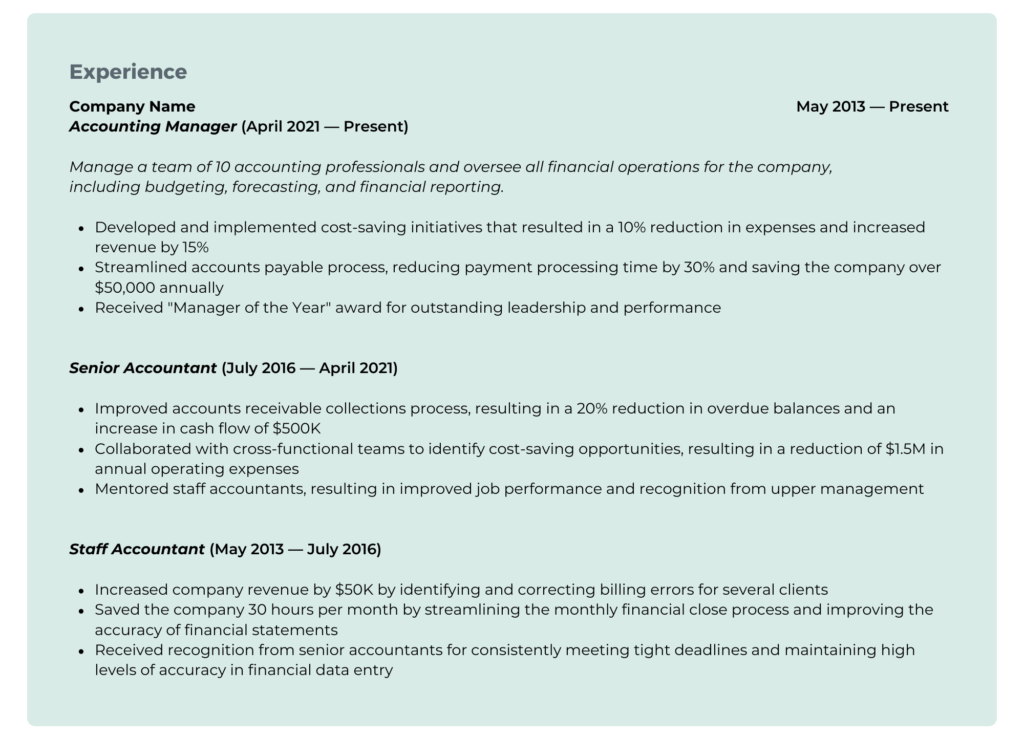Looking for practical ways to refresh your resume? You’re in the right place.
In this blog, we’ll explain why and how often you should update your resume, followed by five tips on how to improve your current resume and impress employers.
Why You Need To Update Your Resume
![]()
On average, employers spend six seconds looking at a resume before deciding which pile to place it in: Interview or Rejection. That’s right, six seconds! But don’t let that discourage you — a strong resume can make all the difference in getting you noticed and landing an interview.
Your resume is your first impression, and it’s important to make it count. A polished and updated resume tells employers that you’re serious about your job search and that you have the skills and experience they’re looking for.
Providing an updated resume can also communicate to employers your:
- Commitment to upskilling and staying relevant in your field
- Ability to organize and present information in a clear and concise manner
- Writing skills and attention to detail
By taking the time to refresh your resume, you give yourself a competitive edge and a reason why employers should choose you over other candidates!
How Often You Should Make Edits
![]()
Do you remember what you ate for breakfast yesterday? What about a week ago? If you’re drawing a blank, that’s very common. So odds are, you also probably don’t remember all the details from a project you completed a year ago or even multiple years ago.
To avoid forgotten but important details, we advise updating your resume after key career milestones and successes. So, what does that mean in terms of time? Well, it depends.
A good rule of thumb is to update your resume every six months, but you may need to make edits more or less frequently. You can always remove information later if it’s no longer relevant to your career goals.
5 Tips for Updating Your Resume
![]()
1. Highlight What You Made, Saved, and Achieved
Trust us, hiring managers don’t want to see resumes that only list job responsibilities. What they do want to know is the value you’ll add.
Showcase your skills and accomplishments to potential employers, and include specific examples of how you’ve made and saved money for prior employers and personal awards or recognition you’ve achieved.
Here is an example of the experience section for an accounting professional:

2. Add Your New Skills and Certifications
What skills have you learned or improved since you last updated your resume? Have you received any new certifications you’re proud of? Or ones you are actively working toward?
Add these details to your resume! Many employers appreciate seeing this information as it demonstrates your commitment to learning and growth, making you a more desirable applicant.
Please note: always be honest about your level of expertise. It’s never a good idea to lie or exaggerate on your resume! Employers may test your proficiency in certain areas during the interview process.
Here are some examples you might be able to include in your resume:

3. Keep It Concise and Easy To Read
We’ll let you in on a little secret: hiring managers don’t want to read lengthy paragraphs. Instead, use bullet points to organize your resume. Why?
- They’re easier to read than complete sentences
- And they draw attention to your important details
(See what we did there?) Remember to keep your bullet points short and sweet, and use strong action verbs to make your experiences stand out.
While adding lots of colors, textures, and graphics may be tempting, we advise you don’t. When it comes to resumes, less is often more. Choose a clean and simple font that is easy to read — Arial font, size 11pt, is a great option. And make sure there’s enough white space throughout your resume so the document doesn’t look or feel cluttered.
One last nugget of advice: remove any internal company acronyms or terminology. You may think your terms are commonly understood, but they may not be. Do your best to translate them to a language that’s more industry standard.
4. Tailor Your Resume to the Job You’re Applying For
When submitting job applications, one size does not fit all. Tailoring your resume to the job you’re applying for can have a significant impact, as it shows your potential employer that you’re the best person for the job.
The good news is you don’t need to start from scratch each time. Instead, review the job description carefully and slightly adjust your resume to align with the essential duties better.
Here’s an example of an edit you could make if the job requires building out cash flow models:


5. Proofread, Proofread, Proofread
Your resume is a direct reflection of you.
- Misspellings and grammatical errors represent a lack of attention to detail
- Bad formatting shows an inability to present and organize information
Before you submit your application, proofread your resume at least twice. Then once more, to be safe. Especially if the role you’re applying to involves reporting.
Pro Tip: Beyond spellcheck, use a tool like Grammarly to catch any missed mistakes.
Related Blogs You’ll Enjoy
![]()
- When To Leave Public Accounting and What To Look For
- 10 Interview Tips to Land Your Dream Job
- 12 Reasons to Connect with a Recruiter

